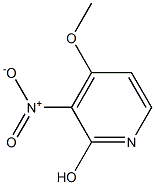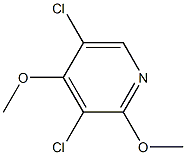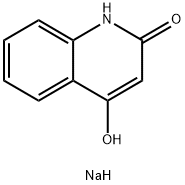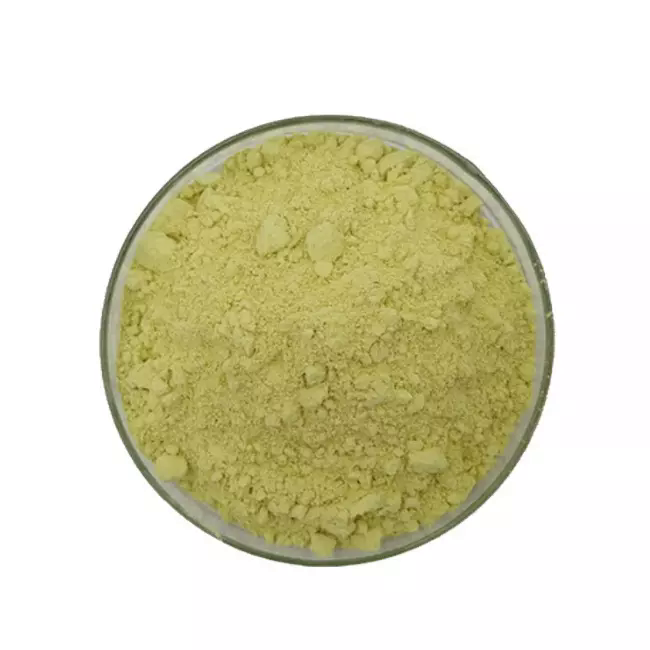2,4-Dihydroxypyridine
Synonym(s):2,4-Pyridinediol;3-Deazauracil;4-Hydroxy-2-pyridone
- CAS NO.:626-03-9
- Empirical Formula: C5H5NO2
- Molecular Weight: 111.1
- MDL number: MFCD00006273
- EINECS: 210-924-8
- SAFETY DATA SHEET (SDS)
- Update Date: 2024-11-14 14:09:35

What is 2,4-Dihydroxypyridine?
Description
2,4-Dihydroxypyridine belongs to the class of organic compounds known as pyridinones. Pyridinones are compounds containing a pyridine ring, which bears a ketone. This compound has been identified in human blood. 2,4-dihydroxypyridine is not a naturally occurring metabolite and is only found in those individuals exposed to this compound or its derivatives. Technically 2,4-Dihydroxypyridine is part of the human exposome. The exposome can be defined as the collection of all the exposures of an individual in a lifetime and how those exposures relate to health. An individual's exposure begins before birth and includes insults from environmental and occupational sources.
What are the applications of Application
2,4-Dihydroxypyridine is profusely employed in multiple fields such as pesticide design, pharmacology, and clinical therapeutics[1]. This compound could used as a new growth-directing agent to to prepare AgPt nanorings supported on reduced graphene oxide (AgPt NRs-rGO) through a facile one-pot wet-chemical route. This label-free electrochemical immunosensor could be used for the sensitive detection of CEA[2].
Chemical properties
white to yellow-beige crystals or cryst. powder
The Uses of 2,4-Dihydroxypyridine
2,4-Dihydroxypyridine (3-deazauracil) was used in the synthesis of diazaphenoxathiin skeleton.
Definition
ChEBI: 2,4-Dihydroxypyridine is a pyridone.
General Description
2,4-Dihydroxypyridine (3-deazauracil) is a potent inhibitor of dihydrouracil dehydrogenase.
References
[1] Pajares A, et al. Ionization effects on the sensitized photooxidation of 2,3-dihydroxypyridine and 2,4-dihydroxypyridine: a kinetic study. Journal of Photochemistry and Photobiology A: Chemistry, 2002; 153: 101-107.
[2] Wang R, et al. A label-free electrochemical immunosensor based on AgPt nanorings supported on reduced graphene oxide for ultrasensitive analysis of tumor marker. Sensors and Actuators B: Chemical, 2017; 254: 1174-1181.
Properties of 2,4-Dihydroxypyridine
| Melting point: | 272-276 °C (lit.) |
| Boiling point: | 208.19°C (rough estimate) |
| Density | 1.3113 (rough estimate) |
| refractive index | 1.4260 (estimate) |
| storage temp. | Inert atmosphere,Room Temperature |
| solubility | DMSO, Methanol |
| form | powder |
| pka | pK1:1.37(+1);pK2:6.45(0);pK3:13(+1) (20°C) |
| color | light yellow |
| Water Solubility | 6.211g/L(20 ºC) |
| BRN | 108533 |
| InChI | InChI=1S/C5H5NO2/c7-4-1-2-6-5(8)3-4/h1-3H,(H2,6,7,8) |
| CAS DataBase Reference | 626-03-9(CAS DataBase Reference) |
Safety information for 2,4-Dihydroxypyridine
| Signal word | Warning |
| Pictogram(s) |
 Exclamation Mark Irritant GHS07 |
| GHS Hazard Statements |
H315:Skin corrosion/irritation H319:Serious eye damage/eye irritation H335:Specific target organ toxicity, single exposure;Respiratory tract irritation |
| Precautionary Statement Codes |
P261:Avoid breathing dust/fume/gas/mist/vapours/spray. P264:Wash hands thoroughly after handling. P264:Wash skin thouroughly after handling. P271:Use only outdoors or in a well-ventilated area. P280:Wear protective gloves/protective clothing/eye protection/face protection. P302+P352:IF ON SKIN: wash with plenty of soap and water. P305+P351+P338:IF IN EYES: Rinse cautiously with water for several minutes. Remove contact lenses, if present and easy to do. Continuerinsing. |
Computed Descriptors for 2,4-Dihydroxypyridine
| InChIKey | ZEZJPIDPVXJEME-UHFFFAOYSA-N |
| SMILES | C1(=O)NC=CC(O)=C1 |
2,4-Dihydroxypyridine manufacturer
Rivashaa Agrotech Biopharma Pvt. Ltd.
New Products
(S)-3-Aminobutanenitrile hydrochloride 4-Methylphenylacetic acid N-Boc-D-alaninol N-BOC-D/L-ALANINOL Tert-butyl bis(2-chloroethyl)carbamate N-octanoyl benzotriazole 3-Morpholino-1-(4-nitrophenyl)-5,6-dihydropyridin- 2(1H)-one Furan-2,5-Dicarboxylic Acid S-2-CHLORO PROPIONIC ACID ETHYL ISOCYANOACETATE 2-Bromo-1,3-Bis(Dimethylamino)Trimethinium Hexafluorophosphate 4-IODO BENZOIC ACID 3-NITRO-2-METHYL ANILINE 1-(2,4-DICHLOROPHENYL) ETHANAMINE (2-Hydroxyphenyl)acetonitrile 4-Bromopyrazole 5,6-Dimethoxyindanone 2-(Cyanocyclohexyl)acetic acid 4-methoxy-3,5-dinitropyridine 1-(4-(aminomethyl)benzyl)urea hydrochloride 2-aminopropyl benzoate hydrochloride diethyl 2-(2-((tertbutoxycarbonyl)amino) ethyl)malonate tert-butyl 4- (ureidomethyl)benzylcarbamate Ethyl-2-chloro((4-methoxyphenyl)hydrazono)acetateRelated products of tetrahydrofuran








You may like
-
 626-03-9 2,4-Dihydroxy pyridine 98%View Details
626-03-9 2,4-Dihydroxy pyridine 98%View Details
626-03-9 -
 2, 4-Dihydroxypyridine CAS 626-03-9View Details
2, 4-Dihydroxypyridine CAS 626-03-9View Details
626-03-9 -
 Pyridine-2,4-diol 98% CAS 626-03-9View Details
Pyridine-2,4-diol 98% CAS 626-03-9View Details
626-03-9 -
 2,4-Dihydroxypyridine CAS 626-03-9View Details
2,4-Dihydroxypyridine CAS 626-03-9View Details
626-03-9 -
 1975-50-4 98%View Details
1975-50-4 98%View Details
1975-50-4 -
 2-HYDROXY BENZYL ALCOHOL 98%View Details
2-HYDROXY BENZYL ALCOHOL 98%View Details
90-01-7 -
 14714-50-2 (2-Hydroxyphenyl)acetonitrile 98+View Details
14714-50-2 (2-Hydroxyphenyl)acetonitrile 98+View Details
14714-50-2 -
 118753-70-1 98+View Details
118753-70-1 98+View Details
118753-70-1